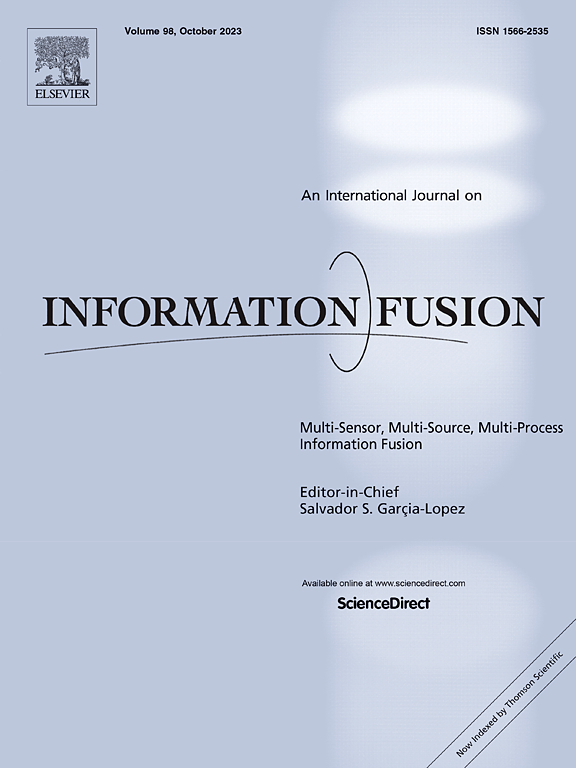GenRAN: GenFusion-guided Reversible Anonymization Network for face privacy preserving
IF 14.7
1区 计算机科学
Q1 COMPUTER SCIENCE, ARTIFICIAL INTELLIGENCE
引用次数: 0
Abstract
The rapid advancement of social networks has made it possible to obtain personal face images without permission. While recent advances in face privacy preservation focus on anonymizing facial features, their effectiveness is limited by challenges in achieving high fidelity for both anonymized and recovered faces in practical scenarios. To address these challenges, we introduce GenFusion, which incorporates Virtual Face Generation (VFG) into the Bi-branch Fusion process with coupling reversibility. Accordingly, we propose a GenFusion-based Reversible Anonymization Network (GenRAN) for enhanced face privacy preservation. Our approach integrates a Multi-Fusion (MF) module, enabling an anonymization encoder to create natural and realistic anonymized faces by fusing original images with virtual faces generated through the VFG module. Furthermore, high-fidelity recovery of the original face from the anonymized version is achieved via an anonymization decoder, which employs a Multi-Recovery module that shares unified parameters with the MF module. Additionally, we introduce a Feature Mixing guided Dense Block to adaptively blend original facial details into the anonymized images, maintain high realism across varying image types. Extensive experiments show that proposed GenRAN can achieve better performance on actual privacy preserving scenarios, while obtaining high perceptual fidelity of anonymized and recovered faces than SOTA methods.
GenRAN:基于genfusion的人脸隐私保护可逆匿名化网络
社交网络的快速发展使得未经许可获取个人面部图像成为可能。虽然面部隐私保护的最新进展主要集中在匿名化面部特征上,但其有效性受到在实际场景中实现匿名化和恢复的面部高保真度的挑战的限制。为了应对这些挑战,我们引入了GenFusion,它将虚拟人脸生成(VFG)集成到具有耦合可逆性的双分支融合过程中。因此,我们提出了一种基于genfusion的可逆匿名化网络(GenRAN)来增强面部隐私保护。我们的方法集成了一个多融合(MF)模块,使匿名编码器能够通过融合原始图像和通过VFG模块生成的虚拟人脸来创建自然和逼真的匿名人脸。此外,通过匿名解码器实现了从匿名版本中恢复原始人脸的高保真度,该解码器采用了与MF模块共享统一参数的Multi-Recovery模块。此外,我们引入了特征混合引导稠密块,自适应地将原始面部细节混合到匿名图像中,在不同的图像类型中保持高真实感。大量实验表明,与SOTA方法相比,GenRAN方法可以在实际隐私保护场景中获得更好的性能,同时获得匿名和恢复人脸的高感知保真度。
本文章由计算机程序翻译,如有差异,请以英文原文为准。
求助全文
约1分钟内获得全文
求助全文
来源期刊

Information Fusion
工程技术-计算机:理论方法
CiteScore
33.20
自引率
4.30%
发文量
161
审稿时长
7.9 months
期刊介绍:
Information Fusion serves as a central platform for showcasing advancements in multi-sensor, multi-source, multi-process information fusion, fostering collaboration among diverse disciplines driving its progress. It is the leading outlet for sharing research and development in this field, focusing on architectures, algorithms, and applications. Papers dealing with fundamental theoretical analyses as well as those demonstrating their application to real-world problems will be welcome.
 求助内容:
求助内容: 应助结果提醒方式:
应助结果提醒方式:


